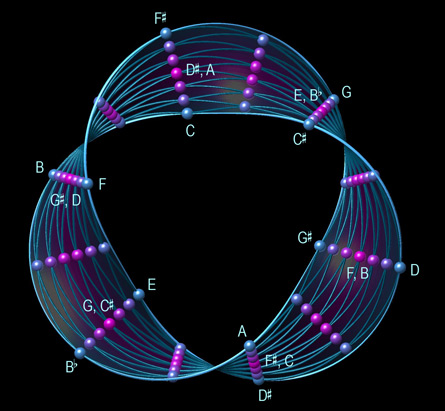- More than 2 years ago
Familiar relationships between sets of musical notes, such as transposition between chords, directly translate into geometrical structures such as this Möbius strip — where each dot represents a whole class of equivalent two-note chords — or into more complex structures with many dimensions.

Composers have an understanding of these geometries without realizing it, says music theorist Dmitri Tymoczko of PrincetonUniversity. “Musicians like Chopin had a very direct, intuitive understanding of these spaces at a time when mathematicians still didn’t know much about high-dimensional geometry,” he says.
Wandering around these spaces, Tymoczko and his collaborators have found subtle relationships between progressions of chords that traditional musical theory would classify as unrelated — for example, between progressions in Mozart’s Fantasy in C-minor and in Beethoven’s Ninth Symphony, the team reported in the April 18 Science.






